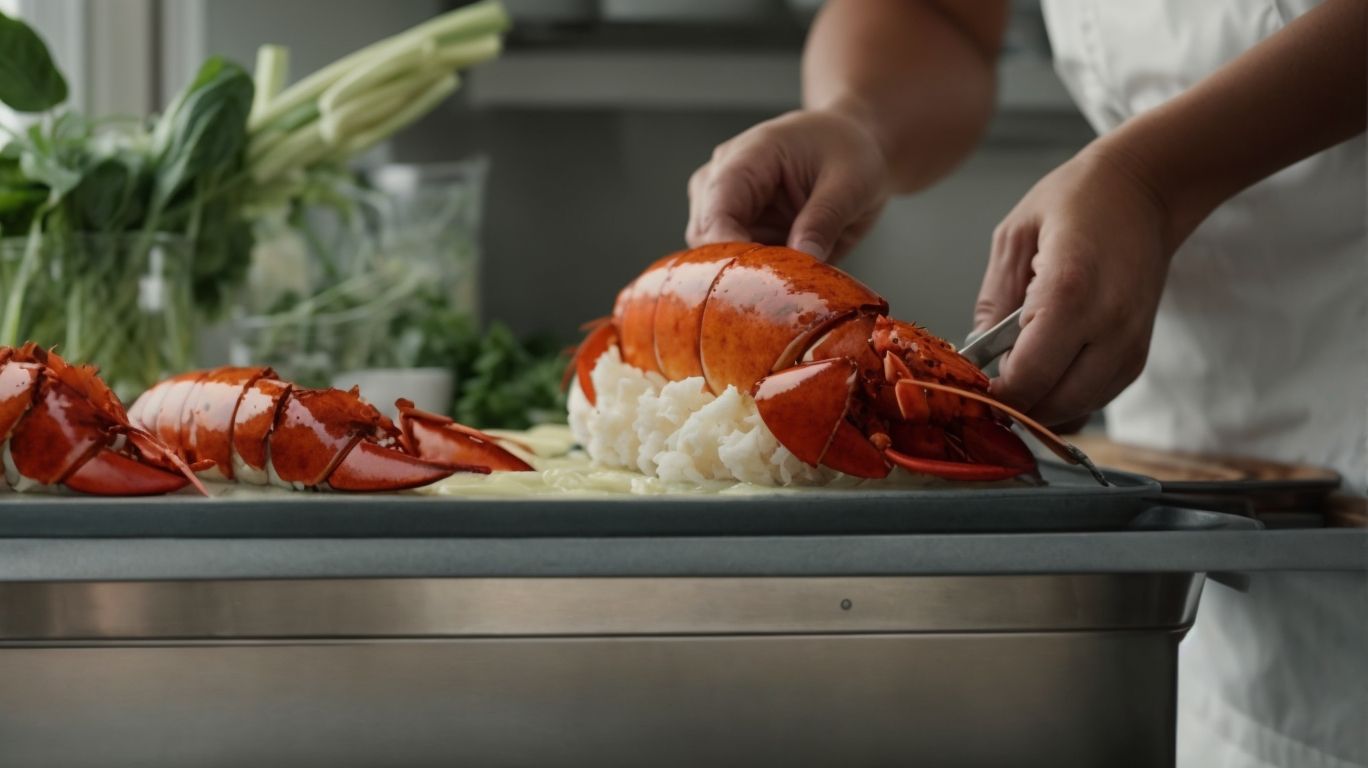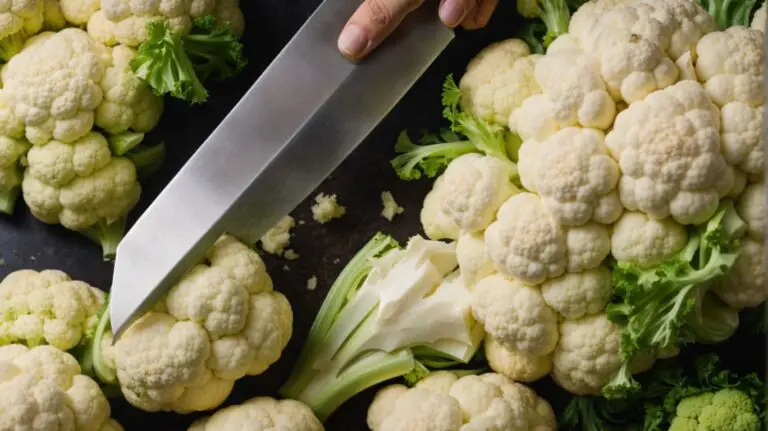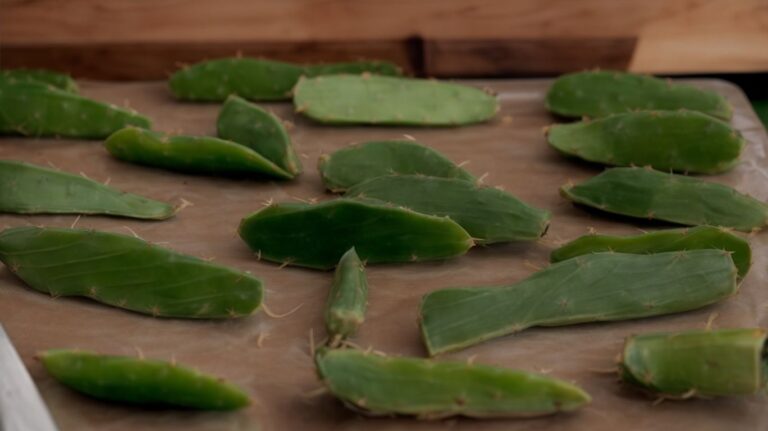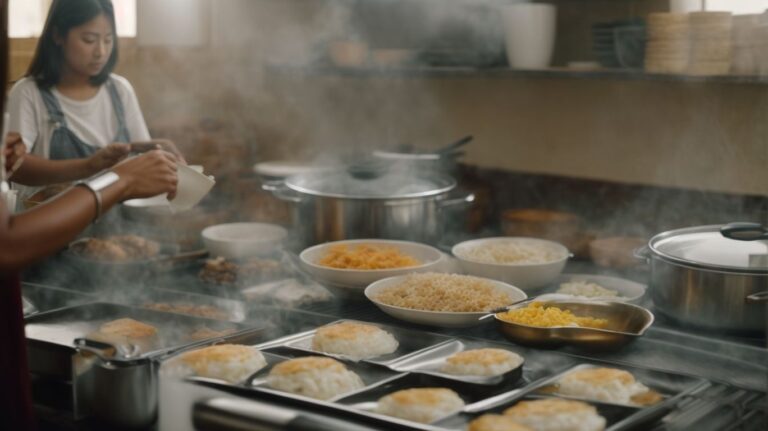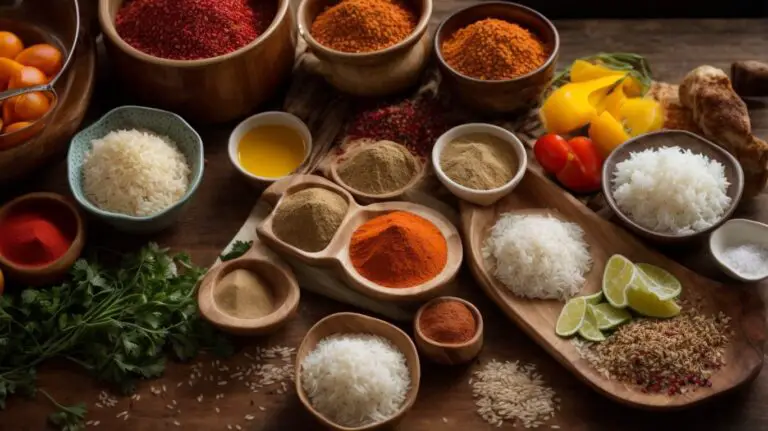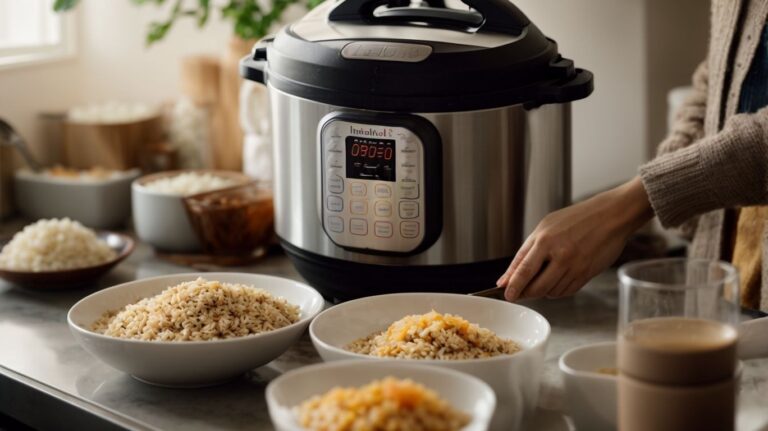How to Cook Lobster Tail?
Are you ready to elevate your culinary skills and impress your dinner guests with a delectable lobster tail dish?
This article will guide you through the essential tools needed for cooking lobster tail, how to choose the best quality tail, preparation techniques, various cooking methods, determining when it’s perfectly cooked, serving suggestions, and some expert tips and tricks to ensure your lobster tail turns out perfectly every time.
Let’s dive in and make your next meal a luxurious seafood feast!
Key Takeaways:
What Tools Do You Need to Cook Lobster Tail?
To cook lobster tail effectively, you will need essential tools such as kitchen shears, tongs, a large pot or skillet, and a meat thermometer.
These tools play a critical role in ensuring that your lobster tail is cooked to perfection each time.
- Kitchen shears are necessary for precisely cutting through the shell to expose the tender meat inside without causing any damage.
- Tongs are essential for handling the delicate lobster tail while it cooks, allowing you to flip it with ease and prevent it from sticking to the cooking surface.
A large pot or skillet is crucial in providing enough space for the lobster tail to cook evenly. It helps in controlling the cooking temperature and ensuring that the meat is cooked through without becoming tough or overcooked. Using a meat thermometer adds a layer of precision to the cooking process, allowing you to monitor the internal temperature of the lobster tail and ensure it reaches the perfect doneness.
Kitchen Shears
Kitchen shears are critical for cutting through the tough shell of lobster tails, allowing you to access the succulent meat inside with ease.
In terms of preparing lobster tail for cooking, having a reliable pair of kitchen shears can make all the difference. These specialized scissors are designed to handle the hard exterior of the lobster shell without compromising the delicate meat within. By carefully maneuvering the shears along the length of the tail, you can effortlessly split it open, revealing the delicious flesh waiting to be cooked.
While using kitchen shears on lobster tails, it’s crucial to prioritize safety. Always ensure that the shears are sharp to prevent any tearing or splintering of the shell, which can lead to unwanted debris in the meat. Maintaining a firm grip on the shears and the lobster tail will prevent slip-ups and potential accidents.
Tongs
Tongs are essential for handling lobster tails during the cooking process, ensuring that they are cooked evenly and safely.
Plus ensuring even cooking and safety, tongs play a crucial role in flipping the lobster tails to achieve that perfect, golden-brown sear on each side. They allow for precise control and delicate handling when maneuvering the delicate meat, helping you handle the tails with ease, especially when they are hot. When selecting the right type of tongs for cooking lobster tails, opt for ones with long handles to prevent any burns or accidents from splattering oil or hot water.
- For grilling lobster tails, look for tongs with a firm grip and scalloped edges to ensure a secure hold on the tail while turning.
- When serving lobster tails, use tongs with a more delicate touch to present the dish elegantly on the plate.
Remember that using the right type of tongs not only enhances the cooking experience but also ensures your safety in the kitchen, making the process of cooking lobster tails a breeze.
Large Pot or Skillet
A large pot or skillet is necessary for boiling, steaming, or sautéing lobster tails, allowing you to cook them to perfection.
In terms of choosing the right cookware, opt for a heavy-bottomed pot for boiling or steaming to ensure even heat distribution and prevent scorching. For sautéing lobster tails, a wide skillet with high sides is ideal as it allows for tossing and turning without overcrowding the pan.
Each cooking method offers distinct benefits:
- Boiling preserves the natural flavor and tenderness of the lobster meat.
- Steaming helps retain moisture and nutrients.
- Sautéing adds a delicious caramelized crust.
Consider your preferences and the dish you wish to create to determine the best approach for cooking lobster tails to satisfy your culinary desires.
Meat Thermometer
A meat thermometer is essential for ensuring that the lobster meat is cooked to the perfect temperature, guaranteeing a safe and delicious dining experience.
When cooking lobster tail, it’s vital to reach an internal temperature that ensures optimal taste and texture while also eliminating any risks associated with undercooked seafood. Using a reliable meat thermometer eliminates the guesswork and helps achieve precise results. Lobster meat is perfectly cooked when it reaches an internal temperature of 140°F (60°C), ensuring it is safe to eat without being overdone. Monitoring the temperature throughout the cooking process is crucial to prevent overcooking, which can lead to a tough or rubbery texture.
How to Choose the Best Lobster Tail?
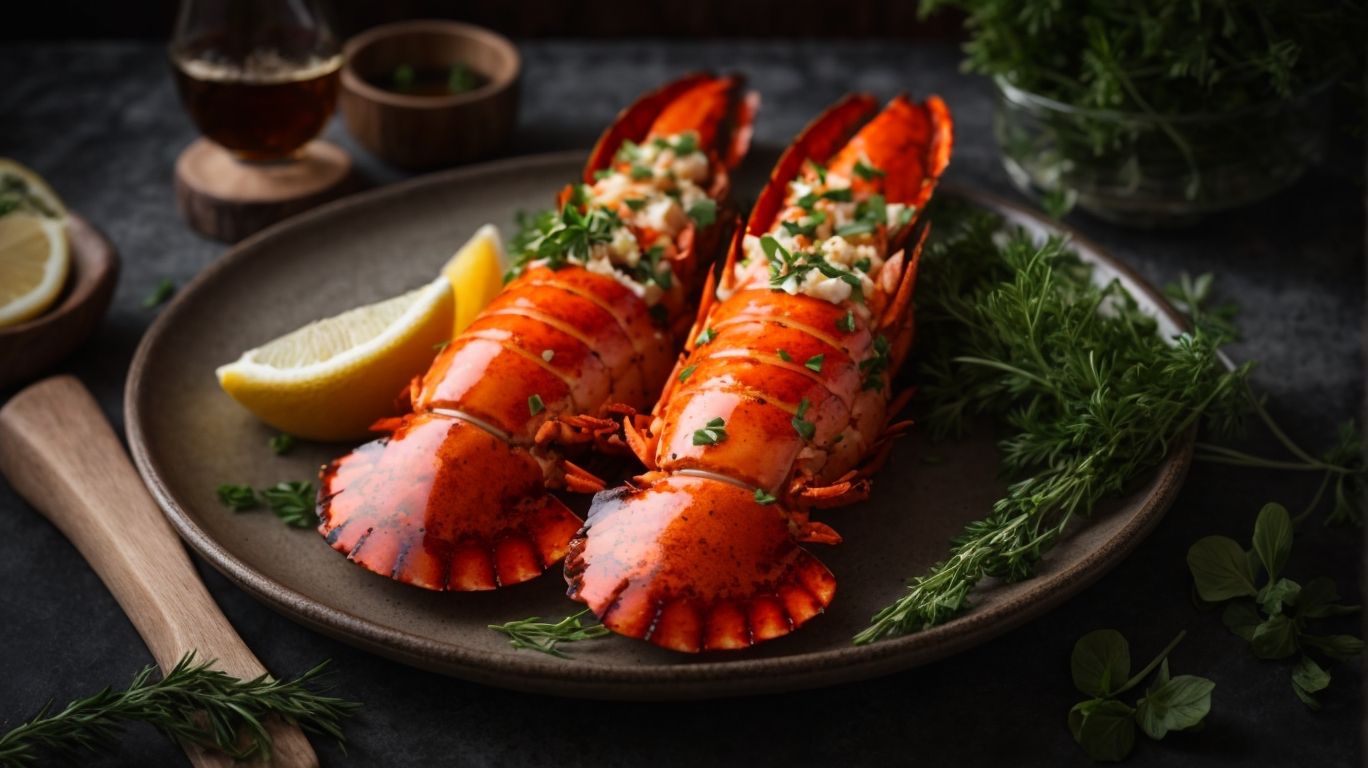
Credits: Poormet.Com – Noah Green
Selecting the best lobster tail involves considering factors such as freshness and size to ensure a delectable dining experience for you and your family.
In terms of choosing lobster tails for a sumptuous meal, freshness is key. Fresh lobster tails not only offer superior flavor but also a more tender and succulent texture when cooked. Look for lobsters that are lively, with a bright color and a sweet oceanic scent – these are telltale signs of freshness. Additionally, size matters when it comes to lobster tails. Opt for tails that are of medium to large size, as they tend to be meatier and provide a more satisfying dining experience.
Freshness
When selecting lobster tails, prioritize freshness to ensure optimal flavor and texture in your culinary creations.
One of the key indicators of fresh lobster tails is their color – vibrant and deep hues signify quality. Look for shells that are intact, without any cracks or holes, which could indicate mishandling or age. Another sign of freshness is the firmness of the meat, ensuring it bounces back when pressed lightly.
For the best dining experience, it’s crucial to use fresh ingredients in your dishes. Fresh lobster tails not only enhance the flavor but also create a more succulent and tender texture when prepared. Whether you’re grilling, broiling, or steaming, starting with fresh lobster tails sets the foundation for a memorable meal.
Size
Choosing the right size lobster tail is essential for portion control and ensuring that each diner enjoys a satisfying meal.
When planning a lobster tail feast, consider whether you prefer larger portions or multiple smaller servings to cater to your guests’ appetite and culinary preferences. The size of the lobster tail not only impacts the visual appeal of the dish but also influences the cooking process.
Smaller lobster tails tend to cook faster and are perfect for recipes that require less time on the grill or in the oven, while larger tails may need a bit more care to ensure they are cooked to perfection without becoming tough or overdone. Selecting the right size lobster tail can elevate the dining experience by offering a generous portion that leaves a lasting impression on your guests.
How to Prepare Lobster Tail for Cooking?
Preparing lobster tail for cooking involves crucial steps such as thawing frozen tails and cleaning them properly to enhance the flavors of your dish.
Thawing lobster tails correctly is essential to ensure the meat remains tender and juicy. Start by placing the frozen tails in the refrigerator overnight to allow for slow, safe thawing.
Once they are fully thawed, it’s time to clean them. Rinse the tails under cold water to remove any ice crystals, then use kitchen shears to carefully cut along the top of the shell to expose the meat inside. Gently lift the meat out of the shell, making sure to keep it intact for presentation.
Thawing Frozen Lobster Tail
Thawing frozen lobster tail is essential to ensure even cooking and preserve the delicate texture of the meat.
Improperly thawed lobster tails can result in uneven cooking and tough, dry meat. To properly thaw a lobster tail, there are a few methods to consider. The safest way is to defrost them in the refrigerator overnight. This gradual thawing process helps maintain the quality of the meat. If you’re short on time, you can also place the frozen lobster tail in a sealed plastic bag and submerge it in cold water for quicker thawing.
- The microwave defrosting method is not recommended as it can lead to partial cooking and compromise the texture.
- Once thawed, handle the lobster tails with care – avoid refreezing them to maintain taste and quality.
- Proper thawing not only impacts the final dish’s taste but also ensures food safety by preventing bacterial growth.
Cleaning the Lobster Tail
Cleaning lobster tail involves removing any debris, grit, or impurities to ensure a pristine dining experience when enjoying this delectable seafood delicacy.
One crucial step in cleaning a lobster tail is deveining it. Begin by locating the digestive vein running along the top of the tail. Gently make an incision with a sharp knife and carefully lift the vein out. Deshelling a lobster tail requires precision and patience. Start by gently breaking the shell along the edges, being careful not to damage the meat inside. Once the shell is loosened, remove it completely to reveal the succulent lobster meat.
After deveining and deshelling, it’s essential to rinse the lobster meat thoroughly under cold water to wash away any remaining impurities. This final step ensures that your lobster tail is not only clean but also primed for cooking. Remember, maintaining cleanliness and excellent hygiene practices is crucial when handling any seafood to guarantee a safe and enjoyable culinary experience.
What Are the Different Ways to Cook Lobster Tail?
There are various methods to cook lobster tail, including boiling, grilling, baking, and broiling, each offering unique flavors and textures to elevate your dining experience.
Boiling lobster tail is a popular method that helps to retain its natural juices and tenderness. To boil, simply bring a pot of salted water to a boil, drop in the lobster tail, and simmer for about 8-12 minutes until the shell turns red and the meat is opaque.
Grilling lobster tail imparts a delicious smoky flavor, best achieved by splitting the tail, seasoning with herbs and butter, and grilling flesh side down for about 5-6 minutes per side.
Baking lobster tail in the oven wrapped in foil with garlic, lemon, and butter yields a succulent and flavorful dish.
Broiling lobster tail, on the other hand, involves cooking it under high heat for a short time, resulting in a caramelized exterior and juicy interior.
Boiling
Boiling lobster tail is a classic method that preserves the natural sweetness and succulence of the meat, creating a tender and flavorful dish.
When preparing to boil lobster tail, begin by bringing a pot of water to a rolling boil. For every quart of water, add about a tablespoon of salt to enhance the natural flavors of the lobster meat. It’s important to fully submerge the lobster tails in the boiling water to ensure even cooking.
Be cautious not to overcook the lobster tail, as it can result in tough and rubbery meat. Typically, lobster tails need to boil for about 8-12 minutes depending on their size. To infuse additional flavor, consider adding aromatic herbs such as thyme or bay leaves to the boiling water.
Grilling
Grilling lobster tail imparts a unique smoky flavor and charred aroma, elevating the dish with a delightful barbecue essence.
When preparing lobster tail for the grill, start by cutting the shell lengthwise and gently loosening the meat without fully separating it.
For a delicious marinade, consider mixing melted butter, minced garlic, fresh lemon juice, and a sprinkle of paprika for that extra kick of flavor that complements the sweet meat of the lobster.
Grill over direct heat for around 5-7 minutes per side, ensuring the meat is opaque and firm but still tender. Adjust the grill temperature to around 400-450°F for optimal cooking.
Baking
Baking lobster tail in the oven results in juicy, tender meat with a hint of herb-infused butter, offering a succulent and flavorful dining experience.
When preparing lobster tail for baking, it’s crucial to make sure you’ve properly cleaned and prepped the shellfish, ensuring all debris is removed. Brushing the lobster tail with a mixture of melted butter, garlic, lemon juice, and fresh herbs can elevate its taste profiles, creating a harmonious blend of flavors that complement the natural sweetness of the lobster meat.
Depending on the size of the lobster tail, baking times can vary, typically ranging between 10-20 minutes at a temperature of 375-400°F. It’s essential to monitor the baking process closely to prevent overcooking and ensure the meat remains tender and moist.
Broiling
Broiling lobster tail under high heat caramelizes the butter and garlic herb seasoning, creating a tantalizing crust while keeping the meat tender and flavorful.
This cooking method intensifies the flavors of the lobster, enhancing its natural sweetness and succulence.
To achieve a perfect char and crust, it’s crucial to preheat the broiler and adjust the rack to ensure the lobster is close enough to the heating element without burning. Basting the lobster tails with melted butter throughout the broiling process adds richness and locks in moisture, preventing them from drying out.
How to Know When Lobster Tail is Cooked?
Determining the doneness of lobster tail involves observing visual cues such as color change, texture, and internal temperature to ensure that it is cooked to perfection.
A properly cooked lobster tail will transform from its raw blue-green color to a vibrant red-orange hue, indicating that the proteins have denatured and the meat has reached its optimal tenderness. The texture should shift from soft and translucent to firm and opaque, giving a delightful resistance when pierced with a fork. Using a kitchen thermometer to measure the internal temperature can confirm that the lobster tail has reached the recommended 140°F (60°C) mark, ensuring both food safety and delicious results.
How to Serve and Eat Lobster Tail?
Serving and enjoying lobster tail involves elegant plating, flavorful dipping sauces, and mastering the art of extracting every succulent morsel from this delectable seafood delicacy.
In terms of plating lobster tail, presentation is key. A beautifully arranged plate can enhance the overall dining experience. Garnishing with fresh herbs like parsley or dill not only adds a pop of color but also complements the rich flavor of the lobster. Pairing the lobster tail with the right sauce can elevate its taste; options like clarified butter, lemon garlic butter, or a light creamy sauce work well. To savor every bite, use a seafood fork or small fork to gently extract the meat, enjoying each tender piece with a hint of the accompanying sauce.
Plating
Elevate the dining experience by artfully plating lobster tail, creating a visual masterpiece that complements the dish’s exquisite flavors and textures.
In terms of plating lobster tail, precision is key. Start by ensuring the lobster tail is perfectly cooked, juicy, and tender. Then, carefully remove it from the shell, allowing it to retain its shape and presentation appeal. Consider using elegant white plates to highlight the vibrant colors of the lobster meat. Balance is crucial, so pair the lobster tail with complementary textures and flavors, such as a delicate lemon-butter sauce or a zesty herb-infused olive oil.
Dipping Sauces
Pairing lobster tail with a selection of delectable dipping sauces enhances the flavor profile and offers a customizable dining experience tailored to your taste preferences.
In terms of dipping sauces for lobster tail, the possibilities are endless. One popular choice is the classic butter garlic sauce, which adds a rich and savory taste to the sweet lobster meat. To create this sauce, simply melt butter in a pan and sauté garlic until fragrant, then drizzle it over your lobster tail for a decadent indulgence.
For those seeking a more herbaceous option, consider an herb-infused sauce that combines fresh herbs like parsley, thyme, and chives with olive oil and lemon juice for a vibrant and aromatic dip. On the other hand, a citrus-based sauce can provide a refreshing contrast to the richness of the lobster, blending zesty lemon or lime juice with a hint of sweetness from honey or maple syrup.
Remember, the key to a successful dipping sauce is balance – experiment with different ingredients and ratios until you find the perfect complement to your lobster tail. In terms of pairing, consider serving your lobster tail with a side of fresh greens or roasted vegetables to create a well-rounded meal that tantalizes the taste buds.
Eating Techniques
Mastering the art of extracting lobster meat from the shell requires finesse and precision, ensuring that you savor every juicy bite of this exquisite seafood delicacy.
Begin by gently cracking the shell along the seams and carefully separating the claw and tail sections. Use a seafood fork or a small fork to extract the succulent meat, being mindful of any hidden pockets. For a hassle-free experience, consider investing in specialized seafood tools like lobster crackers and picks.
To elevate the flavors, pair the tender lobster meat with a side of melted butter seasoned with a hint of lemon and a sprinkle of fresh herbs. For a refreshing contrast, serve it alongside a crisp salad or a light citrus vinaigrette dressing.
Whether you prefer your lobster tail grilled, boiled, or broiled, always aim for just the right doneness to preserve its delicate texture and sweet taste. Enjoy this luxurious indulgence with a glass of chilled white wine or a sparkling champagne to complement the richness of the dish.
Conclusion: Tips and Tricks for Cooking the Perfect Lobster Tail
Mastering the art of cooking the perfect lobster tail involves a blend of culinary expertise, attention to detail, and a dash of creativity to create a memorable dining experience for you and your loved ones.
To enhance the flavor of your lobster tail, consider options such as garlic butter, lemon herb seasoning, or a spicy chili glaze. In terms of cooking techniques, try grilling for a smoky taste, broiling for a quick and easy method, or sous vide for precise cooking.
Presentation-wise, garnish with fresh herbs, serve on a bed of risotto or creamy mashed potatoes, and add a squeeze of fresh lemon for a burst of citrusy goodness. Troubleshooting tip: Overcooked lobster can become tough, so be sure to monitor the cooking time closely.
Frequently Asked Questions
How to Cook Lobster Tail?
Cooking lobster tail is easier than you think. Here are some commonly asked questions about cooking this delicious seafood.
What is the best way to cook lobster tail?
The best way to cook lobster tail is to boil it in a pot of water. This method ensures that the lobster is cooked evenly and retains its natural flavor.
How long should I boil lobster tail?
The general rule is to boil lobster tail for 1 minute per ounce. For example, if the lobster tail weighs 8 ounces, then boil it for 8 minutes.
Can I grill lobster tail?
Absolutely! Grilling adds a smoky flavor to the lobster tail and is a popular method of cooking. Simply brush the tail with butter and grill for 5-7 minutes on each side.
Is it necessary to remove the vein in the lobster tail?
Yes, it is recommended to remove the vein in the lobster tail as it may contain sand or grit. Simply make a small incision and pull out the vein with your fingers or a small knife.
Can I cook frozen lobster tail?
Yes, you can cook frozen lobster tail, but it may take longer to cook. Thaw the tail in the refrigerator overnight before cooking for best results.

